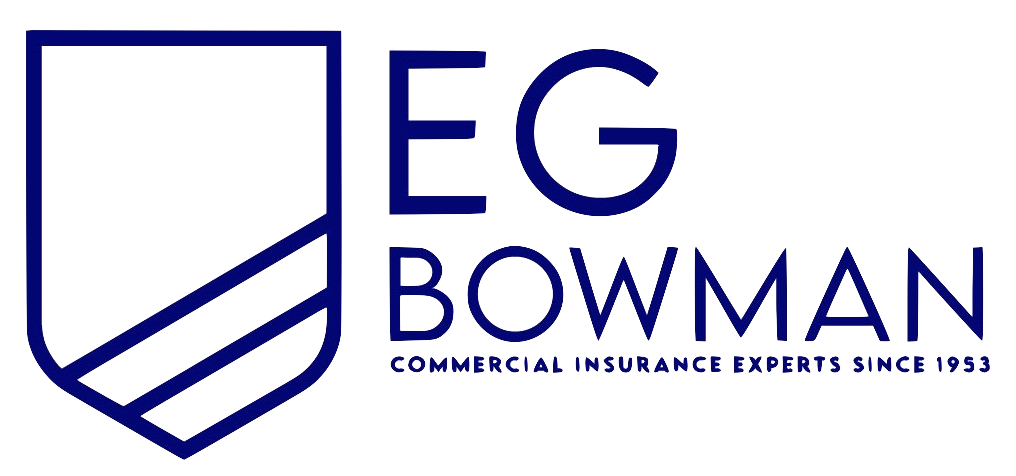
Most Common Business Policies
Index
Contact Us
Fleet insurance is a crucial aspect for businesses operating vehicles in New York, whether they own a small delivery service or a large transportation company. This article will delve into the various elements of fleet insurance, its importance, key features, and how to navigate the legal requirements, all tailored specifically for the New York market.
Understanding Fleet Insurance
Fleet insurance is a specialized type of insurance designed to cover multiple vehicles under one policy. This often includes cars, trucks, vans, and other types of vehicles used for business purposes. By grouping vehicles together, businesses can enjoy several benefits that standalone policies may not provide.
Definition of Fleet Insurance
Fleet insurance enables businesses to insure a group of vehicles with a single policy, streamlining the coverage management process. It simplifies the administration of insurance for businesses that have multiple vehicles, allowing them to deal with one policy instead of several individual ones.
Importance of Fleet Insurance
Having fleet insurance is vital as it protects a business’s assets and ensures compliance with state regulations. Accidents can occur at any time, and being adequately insured can prevent significant financial losses arising from vehicle repairs, medical expenses, and potential legal ramifications.
Additionally, fleet insurance can enhance a company’s professionalism and reliability, which can lead to better customer relationships and improved business reputation. Insurance also plays a pivotal role when businesses need to recruit new drivers, as prospective employees often look for companies that provide ample protection.
Moreover, fleet insurance policies can often be tailored to meet the specific needs of a business, allowing for a range of coverage options that can include liability, collision, comprehensive coverage, and even protection against uninsured motorists. This flexibility means that businesses can select the level of coverage that best fits their operational requirements, ensuring that they are not overpaying for unnecessary coverage while still being adequately protected.
Another significant advantage of fleet insurance is the potential for cost savings. Insurers typically offer discounts for businesses that insure multiple vehicles under one policy, as this reduces administrative costs and risk for the insurer. Additionally, businesses may benefit from lower premiums if they maintain a good driving record and implement safety measures, such as driver training programs and vehicle maintenance schedules, which can further mitigate risks associated with operating a fleet.

Key Features of New York Fleet Insurance
When considering fleet insurance for vehicles in New York, there are specific features and coverage options available that can be tailored to meet the needs of the business.
Coverage Options
Fleet insurance policies in New York typically offer various coverage options, such as liability, collision, comprehensive, and uninsured motorist coverage. Liability insurance is required by law and covers damages to other vehicles and properties in case of an accident. Comprehensive coverage protects against non-collision-related incidents, such as theft or natural disasters.
Furthermore, businesses can often customize their policies with add-ons such as roadside assistance, rental vehicle reimbursement, and coverage for specialized vehicles like refrigerated trucks or heavy machinery. This flexibility allows companies to ensure that their unique operational needs are met, providing peace of mind that they are adequately protected against a variety of risks. For instance, businesses that rely on delivery services can benefit greatly from coverage that includes lost cargo or equipment breakdown, which can significantly impact their bottom line.
Policy Limitations
While fleet insurance provides many benefits, it’s essential to be aware of potential limitations. Insurers may impose restrictions on the number of vehicles covered or require specific driver qualifications. Additionally, fleets may face caps on certain types of damages or limitations regarding usage, such as personal uses of company vehicles.
Businesses should thoroughly review their policy to understand what is not included and avoid any surprises during a claim process. It’s also crucial to consider how changes in the business, such as adding new vehicles or drivers, can affect coverage. Regularly updating the fleet insurance policy is vital to ensure that all vehicles are adequately insured, especially as the business grows or changes. Moreover, understanding the claims process and the documentation required can help streamline any future claims, ensuring that businesses can quickly recover from incidents without excessive delays or complications.
How to Choose the Right Fleet Insurance in New York
Choosing the right fleet insurance involves assessing the unique needs of the business and evaluating different providers to ensure comprehensive coverage at an affordable cost.
Assessing Your Fleet's Needs
The first step in selecting the right fleet insurance is to assess your fleet's specific needs. This includes evaluating the number of vehicles, types of services provided, and the distance traveled. Understanding the vehicle usage will help determine necessary coverage types and limits.
Additionally, considering factors like the demographics of your drivers and the overall risk level of your operations can inform the decision-making process. For example, if drivers frequently travel in high-traffic zones, additional liability coverage might be prudent. Furthermore, it’s essential to account for the age and condition of the vehicles in your fleet, as newer vehicles may qualify for discounts while older ones may require more extensive coverage due to increased risk of breakdowns or accidents.
Moreover, understanding the nature of your business operations can also play a significant role in determining your insurance needs. If your fleet is involved in transporting hazardous materials or operating in adverse weather conditions, specialized coverage may be necessary to protect against unique risks. Engaging with your team to gather insights on daily operations can provide a clearer picture of the potential challenges your fleet may face.
Comparing Insurance Providers
Once the fleet’s needs have been established, it's crucial to compare quotes and policies from different insurance providers. Look for references and read online reviews to gauge customer satisfaction with claims handling and customer service.
Many companies provide user-friendly online quote tools that can help businesses obtain multiple quotes quickly. Be diligent about assessing policy limits, exclusions, and premiums before making a final decision. It may also be beneficial to consult with an insurance broker who specializes in fleet coverage. Brokers can provide valuable insights into the nuances of various policies and help tailor coverage to fit your specific requirements.
In addition to comparing costs, consider the additional services offered by insurance providers, such as risk management resources, driver training programs, and telematics solutions. These services can enhance safety and efficiency within your fleet, potentially leading to lower premiums over time. Furthermore, establishing a good relationship with your insurer can be advantageous, as they may offer personalized support and guidance throughout your policy term, ensuring that your coverage evolves with your business needs.
Cost of Fleet Insurance in New York
The cost of fleet insurance can vary significantly based on several factors. Companies in New York must stay informed about what influences these costs to budget accordingly.
Factors Influencing the Cost
Several elements impact the cost of fleet insurance, including the number and type of vehicles, the driving records of the drivers, and the coverage options selected. For instance, a fleet consisting of high-value vehicles may incur higher premiums due to increased risk.
Furthermore, industry type can influence costs; transportation services, for instance, may have different risk assessments compared to construction or landscaping businesses. The insurance company's individual underwriting criteria and claims history are also crucial factors to consider. Additionally, geographical location plays a role; urban areas with higher traffic density and accident rates may see increased premiums compared to rural settings. The age and condition of the vehicles in the fleet can also affect costs, as newer vehicles often come with advanced safety features that can mitigate risks.
Ways to Reduce Your Premiums
Reducing insurance premiums is a common desire for many business owners. There are several strategies to lower costs effectively. Offering driver training programs can improve driver safety and reduce premiums. Insurers often reward lower-risk drivers with discounts.
Additionally, maintaining a good claims history, bundling policies for additional savings, or increasing the deductible can also lead to decreased premiums. Regularly reviewing the policy to ensure it aligns with the current fleet is essential for cost management. Another effective method is to implement telematics technology, which monitors driving behavior in real-time. This data can provide insights into speeding, hard braking, and other risky behaviors, allowing companies to address issues proactively and potentially secure lower rates from insurers. Moreover, engaging with an insurance broker who specializes in fleet coverage can provide tailored advice and access to competitive rates, ensuring that businesses are not overpaying for their coverage.

Legal Requirements for Fleet Insurance in New York
In New York, certain legal requirements must be met concerning fleet insurance. Understanding these regulations is paramount for compliance and operational longevity.
State Regulations
New York state law requires any vehicle registered in the state to have a minimum level of liability insurance. This means businesses with fleets must obtain coverage that meets or exceeds these legal requirements. The minimum coverage includes bodily injury and property damage insurance.
Moreover, businesses should remain updated about any changes in state laws that may affect their insurance policies. Regulations can fluctuate, and being knowledgeable can help prevent penalties or legal issues. In addition to liability coverage, fleet operators may also consider comprehensive and collision coverage, which can provide protection against theft, vandalism, and other damages that may not be covered under basic liability policies. Understanding the nuances of these additional coverages can significantly enhance a fleet's risk management strategy.
Penalties for Non-Compliance
Failure to comply with state insurance regulations can lead to severe penalties for businesses. This may include fines, suspension of vehicle registration, or even potential legal action from third parties in the event of an accident.
Therefore, it is imperative for fleet operators to ensure they maintain adequate coverage at all times and continuously monitor changes in the legal landscape surrounding fleet insurance. In addition to financial penalties, non-compliance can also tarnish a business's reputation, making it difficult to secure contracts or partnerships in the future. Fleet operators should consider implementing regular audits of their insurance policies and training for staff on compliance issues to mitigate these risks effectively. Furthermore, engaging with an insurance advisor who specializes in fleet coverage can provide valuable insights and help tailor policies to meet specific business needs, ensuring comprehensive protection against unforeseen liabilities.
Claiming Fleet Insurance in New York
Understanding how to file claims and navigate the insurance claim process effectively can make a significant difference in how quickly a business can recover from an incident. Fleet insurance is crucial for businesses that rely on multiple vehicles, as it protects against various risks, including accidents, theft, and damage. Knowing the ins and outs of the claim process can not only save time but also reduce the financial impact of unforeseen events.
Steps to File a Claim
Filing a claim typically begins with documenting the incident, which includes collecting relevant evidence such as photographs, police reports, and witness information. This documentation is vital as it provides a clear account of what transpired, helping to substantiate the claim. Once this information is gathered, businesses should contact their insurance provider as soon as possible to report the claim. Prompt reporting can often lead to quicker resolution times, allowing businesses to minimize disruptions to their operations.
Most insurance companies have specific claim forms that must be completed, and providing accurate and detailed information can help facilitate a smoother process. It’s advisable for businesses to review their policy beforehand to understand what information is required. Additionally, businesses should keep records of all correspondence with the insurer for future reference. This includes saving emails, taking notes during phone calls, and keeping copies of submitted documents, as these records can be invaluable if disputes arise later in the process.
Understanding the Claim Process
The claim process may vary between insurers but generally involves an investigation phase where the insurance company assesses the validity of the claim. This phase can include interviews with involved parties, analysis of the collected evidence, and possibly even an inspection of the damaged vehicles. Following this, the insurer will determine the amount payable, which can depend on coverage limits, policy terms, and deductibles. It's important for businesses to understand their policy details, including any exclusions that may apply, as this knowledge can help set realistic expectations regarding the outcome of the claim.
It's essential for business owners to stay engaged during this process and promptly respond to requests for additional information from the insurance company. Regular communication can help expedite claims resolution and ensure that the business receives the compensation it is entitled to. Furthermore, business owners should consider reaching out to a claims adjuster or a legal advisor if they encounter difficulties or delays. Having a professional advocate can provide additional support and ensure that the claim is handled fairly and efficiently, ultimately helping the business to recover and return to normal operations as quickly as possible.
Frequently Asked Questions about New York Fleet Insurance
When it comes to fleet insurance, many business owners have common questions regarding coverage, options, and practicality.
Can I Customize My Fleet Insurance?
Yes, fleet insurance in New York can often be customized to fit the specific needs of a business. This includes adding various types of coverage as well as tailor-made limits. Many insurers are open to discussing policy changes and adaptations based on your fleet's requirements.
Customizing insurance not only ensures adequate protection but can also lead to cost savings by focusing on what’s essential for the specific business operations. For instance, businesses that operate in high-risk areas might opt for higher liability limits or additional coverage for theft and vandalism. Furthermore, fleet managers can consider adding roadside assistance or rental reimbursement options, which can be invaluable in minimizing downtime during vehicle repairs.
What is Not Covered by Fleet Insurance?
While fleet insurance covers a broad range of situations, it's important to note specific exclusions that might apply. Common areas not covered include personal use of company vehicles, damage caused by racing or negligence, and certain types of equipment in the vehicle.
Additionally, employers should also look into whether coverage extends to non-owned vehicles used for business purposes, as this could vary by policy. Understanding these exclusions can help businesses avoid unexpected expenses. For example, if an employee uses their personal vehicle for a work-related task, it’s crucial to verify whether the fleet policy provides any coverage for such scenarios. This can prevent potential liability issues and ensure that all vehicles used for business are adequately protected.
Moreover, businesses should be aware that certain activities, such as transporting hazardous materials or engaging in high-risk deliveries, may require additional endorsements or separate policies. By recognizing these nuances, business owners can make informed decisions that align their fleet operations with the right insurance coverage and risk management strategies.
